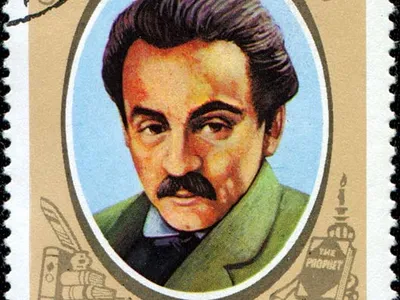Khalil Gibran: A Poet, Philosopher, and Visionary

Introduction
Khalil Gibran, a Lebanese-American poet, philosopher, and artist, is celebrated as one of the most profound and influential writers of the 20th century. His literary works have touched the hearts and minds of readers worldwide, transcending cultural boundaries and becoming a source of inspiration for generations. This essay delves into the life, philosophy, and literary contributions of Khalil Gibran, highlighting some of his most notable works.
Biography
Khalil Gibran was born on January 6, 1883, in the town of Bsharri, which is now part of modern-day Lebanon. He was raised in poverty, as his family emigrated to the United States when he was a child in search of a better life. Settling in Boston, Massachusetts, Gibran was exposed to a diverse and intellectually stimulating environment that played a crucial role in shaping his future as a writer and thinker.
Gibran’s artistic talents were evident from a young age, and he received early encouragement to pursue his passion for painting and writing. He moved to New York City in 1912 and began to establish himself as a poet, philosopher, and artist within the city’s vibrant cultural scene.
Literary Works
Khalil Gibran’s literary output is characterized by its poetic and philosophical depth, often exploring themes of love, spirituality, self-discovery, and the human condition. Some of his most notable books include:
“The Prophet” (1923): “The Prophet” is undoubtedly Khalil Gibran’s most famous work. This collection of prose poems covers a wide range of topics, such as love, marriage, work, and freedom. The book has been translated into over 100 languages and has sold millions of copies worldwide, making it a classic of modern literature.
“Spirits Rebellious” (1908): In this collection of essays and poems, Gibran criticizes the social and religious norms of his time, advocating for individualism and the pursuit of one’s own beliefs and values.
“The Broken Wings” (1912): A novella that explores themes of love and tragedy, this work is considered one of Khalil Gibran’s most personal and emotionally charged pieces.
“The Madman” (1918): This collection of aphorisms and parables reflects on the complexities of human nature and the pursuit of wisdom.
“Sand and Foam” (1926): Another collection of aphorisms and essays, “Sand and Foam” explores the paradoxes of life, love, and existence.
“The Garden of the Prophet” (1933): A sequel to “The Prophet,” this book delves deeper into the teachings and philosophy of Almustafa, the beloved protagonist of the original work.
Philosophy
Khalil Gibran’s philosophy is a harmonious blend of Eastern and Western thought. He emphasized the importance of individualism and the pursuit of personal truth, while also advocating for universal love, compassion, and empathy. His works often encourage readers to look inward, seek self-awareness, and embrace the complexities of human existence with grace and understanding.
Legacy
Khalil Gibran passed away on April 10, 1931, but his legacy endures through his timeless writings. His profound insights into human nature and spirituality continue to inspire and provide solace to people around the world. His works have been cited by countless authors, philosophers, and leaders, and he remains a beloved figure in both American and Lebanese literature.

Conclusion
Khalil Gibran was a literary luminary whose works continue to resonate with readers for their timeless wisdom, profound spirituality, and poetic beauty. Through his writings, he sought to bridge the gap between cultures and offer a universal message of love, self-discovery, and understanding. His influence extends far beyond his lifetime, making him a revered figure in the world of literature and philosophy. Khalil Gibran’s legacy lives on, inspiring generations to come to seek truth, embrace love, and find meaning in the human experience.





